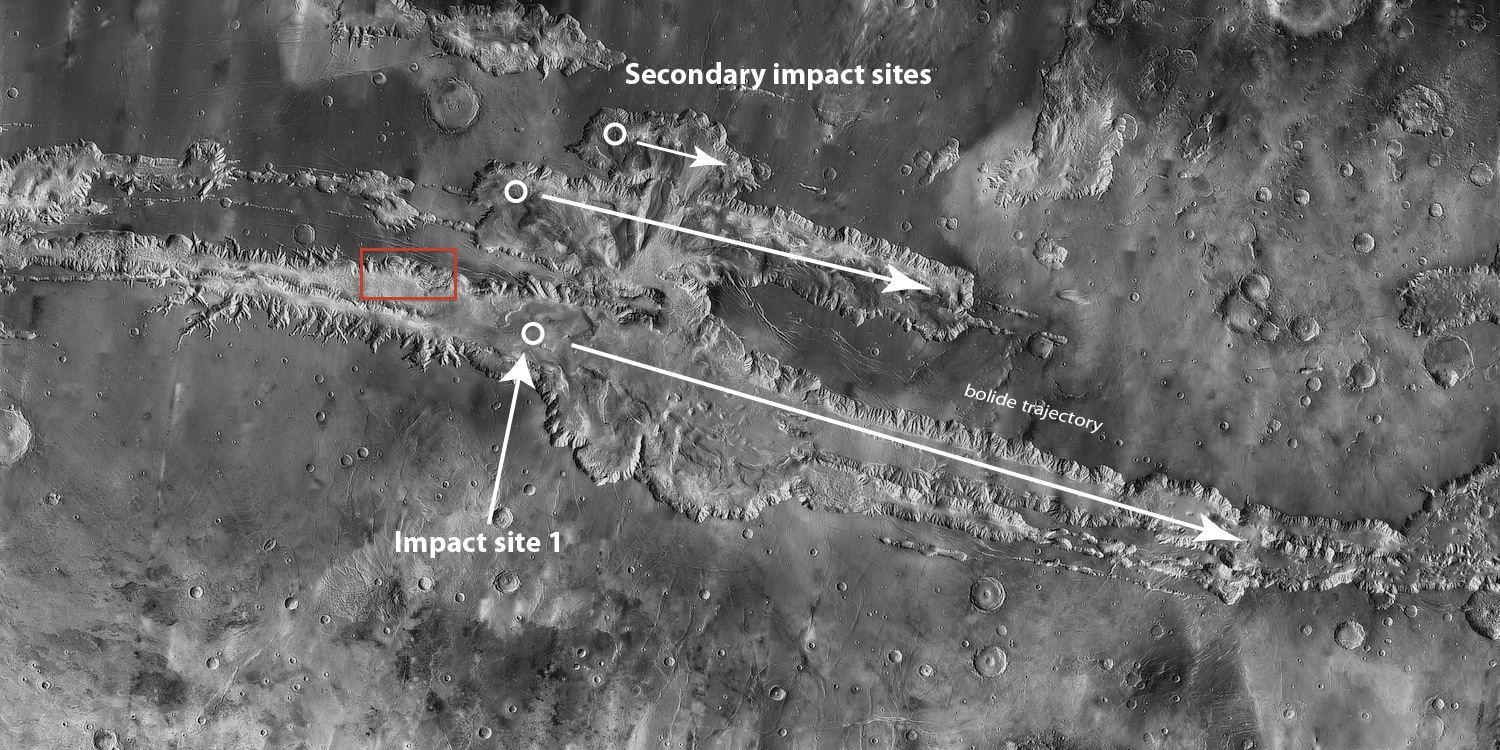Valles Marineris (with close-up of secondary impact sites)
Perhaps as the bolide lost energy and began to break up, parts of it may have actually bounced back into space, while others bounced off surface features and changed trajectory somewhat.
The first image in this series is that of your typical meteor crater going straight down to the surface. Clicking on the main image takes you to the next page with an image of Valles Marineris. Click two more times again to get all my graze hypothesis images.
Just to be clear, suppose you have a hard object going past Mars at the high speed typical of a meteor (30-100km/s??). Most impacts involve actual physical contact. But what if there weren’t any?
What if the object was for example a (very hard) metallic meteorite going by at high speed and only grazed the atmosphere of Mars (let’s say a km away from the surface at the closest point), with some pieces breaking off at different points, then careened off into space barely slowed down by the encounter, though perhaps slightly deviated in trajectory by Mars’ gravity. At impact site 1, there appears to be a deviation away from the orginal trajectory, turning slightly to the south. Perhaps a chunck came off the main body of the bolide at impact site 1 resulting in a change in trajectory. I am of course dependant on the available images of of Valles Marineris having being made at precisely 90 degrees above the canyon (which of course may not be the case...).
One thing to take into consideration is that under this hypothesis, the Valles Marineris canyon would primarily be produced by a shock wave and NOT (as is typical) by a physical impact. Seeing VM is 200km wide, I’m guessing, the object that caused it may have been perhaps 250km in diameter. Cavitation effects (usually occurring in water) may have played a major part in VM being dug up as a huge vacuum would immediately follow our bolide as it swept past Mars' surface. In water, cavitation is known to cause very rapid erosion even in reinforced concrete. In this case I would speculate that a solid object moving through even a thin atmosphere such as Mars might produce such effects. Parallel canyons could have been created by fragments coming off the main bolide. One interesting point to take into consideration is that the deepest and widest cratering occurs at the mid-point of the trajectory, and taking into consideration that Mars is a sphere, this is what one would expect from a projectile almost grazing it's surface. One implication of this hypothesis is that there would be no observable debris field (as one would expect with a slower moving object, eventually coming to a stop and very likely disintegrating).
Yes, of course this hypothesis DOES NOT jibe with the (more popular) tectonic plate activity origin for Valles Marineris canyon held by a majority of astrophysicists, but if plate activity is responsible for the separation of Pangea fracturing into our present continents, this DID NOT produce the relatively straight lines over thousands of km that we find with the Valles Marineris canyon.
Click on image to go to the next page
More discussion of an impact origins for Valles
Marineris here.
Further images of Valles Marineris may be provided by India's MARS
ORBITER MISSION
(some of which have been done on the Ophir
Chasma)
Click for hi-res
detailed image.
